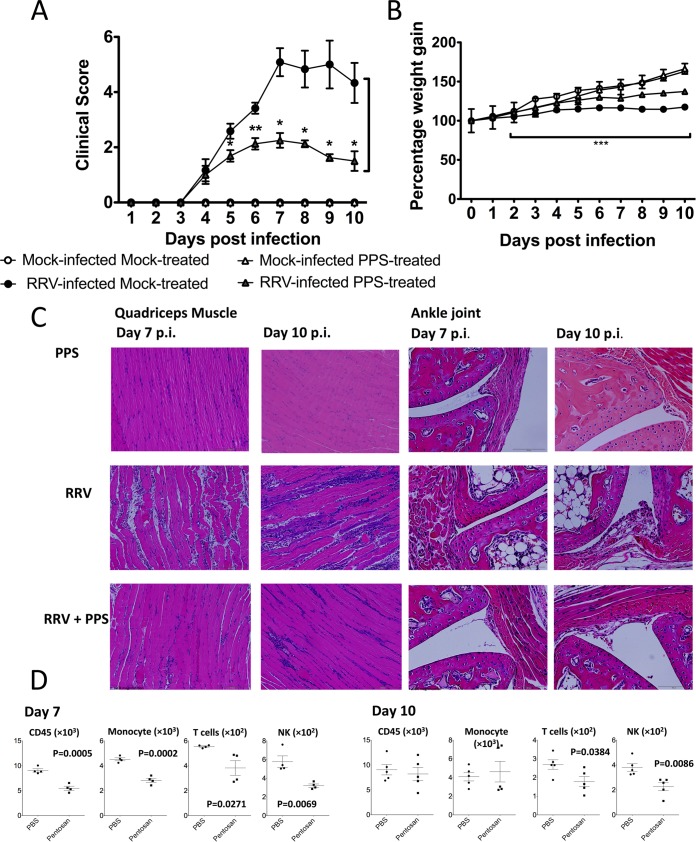FIG 2.
Pentosan polysulfate reduces the severity of acute RRV-induced inflammatory disease. PPS treatment reduced the levels of disease signs, prevented severe weight loss, and reduced the levels of inflammatory infiltrates in the joint and muscle tissues, thus protecting the muscle tissue from extensive RRV-induced damage. Twenty-day-old C57BL/6 mice were infected s.c. with 104 PFU RRV or mock infected with diluent alone and then either treated daily i.p. with PPS at 3 mg/kg in 100 μl PBS or mock treated with PBS alone. (A) Mice were scored for the development of hind-limb dysfunction and displayed a reduction in RRV disease severity with PPS treatment. Mock-infected mice were given a score of zero for the duration of the experiment. *, P < 0.05; **, P < 0.01; Mann-Whitney test. (B) Weight was monitored at 24-h intervals. ***, P < 0.001 for significantly reduced weight loss of RRV-infected PPS-treated mice compared to that in RRV-infected mock-treated mice; two-way ANOVA with Bonferroni posttest. (C) For histological analysis, mice were sacrificed at 7 or 10 days p.i. and perfused with 4% PFA, quadriceps and knee joint tissues were removed and paraffin embedded, and 5-μm sections were generated. Sections were stained with H&E. (D) Quadriceps muscles were removed from RRV-infected PPS (pentosan)- and PBS-treated mice at days 7 and 10 p.i., and cells were isolated, counted, and stained for CD45, Gr1, CD11b, pan-NK/NKT, CD3, and CD19 expression. Total leukocyte (CD45hi), inflammatory monocyte (Gr1hi CD11bhi), NK/NKT (CD45hi pan-NKhi), and T cell (CD3hi) populations were determined among total live (PI negative) infiltrated cells using various gating strategies, and the results analyzed by Student's t test. Each symbol represents the mean result ± SEM for 5 to 10 mice and is representative of 3 to 4 independent experiments.

